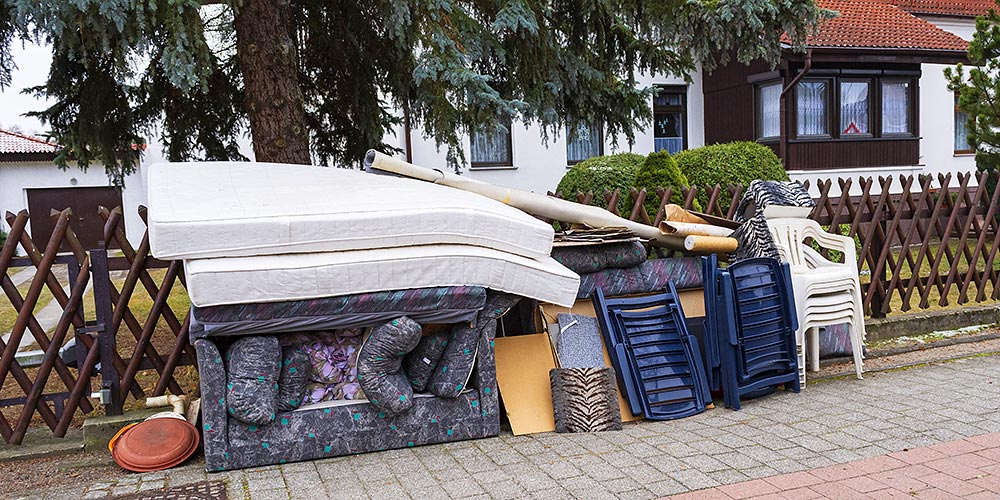When most people think of carpet Wohnungsauflösung Berlin, two images come to mind. The first is a van-mounted “steam” system with pressure and suction lines running into a house. The second is a small “soak and suck” unit which may be rented from a local grocery or home improvement store. Although these are very common ways to clean a residential carpet, there are alternative methods which are better suited to commercial cleaning. There are actually four common methods of cleaning carpet which include foam cleaning, “dry” cleaning, extraction cleaning, and bonnet cleaning.
“Bonnet cleaning” is an adaptation of common hard floor cleaning methods to carpets. A round absorbent bonnet is prepared before use by dampening it with water, then wringing it out if necessary so that it isn’t dripping wet. Heavily soiled areas are pre-sprayed with a bonnet cleaning solution. The absorbent bonnet is then attached to a low speed (175 RPM) rotary floor machine, which needs a heavy-duty motor because of the high friction involved. A special drive block is required to keep the bonnet or pad from slipping off. Dirt is absorbed into the pad as it is circulated over the carpet. The bonnet should be turned over or replaced when the pad surface stops absorbing soil. The bonnet may be washed out and reused as needed. Sometimes, carbonated water is used to give better soil suspension and bring down the pH levels of the cleaning solution. There are many reasons why bonnet cleaning should be the preferred method to clean commercial grade carpets:
1. Bonnet cleaning maximizes the use of equipment every professional cleaning company should already own. In tough economic times, many people buy a mop, bucket, broom, and vacuum cleaner and call themselves “professional cleaners.” True professional cleaning companies have commercial grade equipment which start-ups simply can’t afford, and don’t know how to properly use. Swing arm machines, all-in-one floor machines, and auto scrubbers are ideal for this cleaning method. They work even better if they release cleaning solution while being used. Although these machines are expensive and were originally designed to clean hard surface floors, they are easily adapted to bonnet cleaning carpets.
2. Bonnet cleaning is the most aggressive method of cleaning soiled carpets. This is especially true when using bonnets with scrub strips. The possible disadvantages of bonnet cleaning include pile distortion and fiber damage, swirl marks, abrasion of carpet due to unseen hazards (including sand, pebbles, or staples,) and detergent build-up. Although the high level of friction and weight of the drive devices can damage carpets if not properly utilized, a competent cleaner can get amazing results from this method by incorporating certain safeguards. Thoroughly vacuum all areas to be cleaned, and frequently reconfirm that both carpet and bonnet are damp enough to allow the bonnet to move freely over the carpet without heating the carpet fibers.
3. Bonnet cleaning has an extremely short drying time. Bonnet cleaned carpets may dry in as little as thirty (30) minutes. It may take even less if looped drying bonnets are used after a carpet is cleaned. This compares to twelve (12) to twenty-four (24) hours drying time for wet cleaning methods. Other advantages of the bonnet cleaning method are rapid cleaning time (especially important in large, open areas), and minimal wicking of stains.
4. Bonnet cleaning is inexpensive for the customer. Since most commercial cleaning companies already own all equipment needed for bonnet cleaning, it is an inexpensive service to provide. The savings are usually passed on to the customer. This results in cleaning costs equal to, or less than, other methods.
5. Many styles of bonnet pads are available. The most common is a low-profile bonnet with scrub strips for additional scrubbing action. Some bonnets lack strips, but are designed with a combination of both loop and cut ends. The cut ends absorb while the looped ends scrub your carpets clean. Microfiber pads are very absorbent and easy to launder after use. Drying bonnets have longer fibers which are very absorbent. The variety of available bonnets allows you to tailor your cleaning to the carpet and soil levels you encounter.
6. Bonnet cleaning is inexpensive for commercial cleaners. Bonnets cost between twenty and thirty dollars depending on size, style, and quantity purchased. If properly used and cleaned, bonnets may be used many times before wearing out. Professional grade bonnet cleaning solution costs approximately twenty dollars per gallon ($20.00/gallon) and less if bought in bulk. The speed of the process also contributes to its affordability. The low operator cost of bonnet cleaning allows a commercial cleaner to compete with “soak and suck” carpet cleaning costs.
7. Bonnet cleaning compares favorably to the shampoo, dry clean, or extraction methods in a commercial setting:
A. The “shampoo” method applies lots of wet foam to a carpet. The soil absorbent foam is allowed to dry, and the residue is later vacuumed. The damp, sticky residue may cause resoiling. Because most foam shampoos are poor detergents, they frequently also contain high levels of optical brighteners which make the carpet appear cleaner and brighter than it really is. The brighteners may eventually leave a yellow cast which cannot be removed.
B. The “dry cleaning” method uses virtually no water. A dry absorbent compound (containing small amounts of water, detergent, and solvent,) is sprinkled over the carpet or worked into the carpet with a machine. This purpose of this cleaner is to attract and absorb soil. Mechanical agitation from a brush works the cleaner through the carpet. The low moisture soil/detergent/solvent mixture is absorbed into the carrier and is then vacuumed up. They are often used with a detergent pre-spray in heavily soiled areas. With the extremely fine powders used, indoor air quality can be reduced. A white powder may appear on shoes and cuffs, indicating too much was used and it was not thoroughly vacuumed up.
C. The “extraction” method uses a lot of heated water and has long drying times of up to twenty-four (24) hours. This method is frequently called “steam” cleaning due to the fine spray of water used to force dirt out of the carpet which is sucked up by the vacuum slot immediately in front of the spray. Depending upon the equipment, temperatures may range from cold tap water to boiling hot water and even super heated water over 200 degrees F. Of course, with extremely high temperatures, there are dangers of scalding should a solution line break.
Bonnet cleaning is, in many cases, the optimal cleaning method for commercial grade carpets. It may be too harsh for residential carpets, but in many commercial settings it offers the best combination of affordability and thorough cleaning. Scott A. Ollar is the Managing Member of Sarasota Commercial Cleaning, LLC. Mr. Ollar has owned and operated succesful cleaning businesses for more than fifteen years. He has extensive experience in the professional cleaning of business locations.


